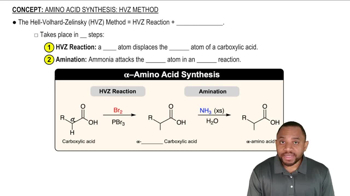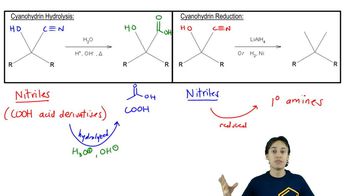Show how to prepare the following aromatic amines by aromatic nitration, followed by reduction. You may use benzene and toluene as your aromatic starting materials.
(d) m-aminobenzoic acid
 Verified step by step guidance
Verified step by step guidance Verified video answer for a similar problem:
Verified video answer for a similar problem:



 9:12m
9:12mMaster The Primary Amines Flowchart with a bite sized video explanation from Johnny
Start learning